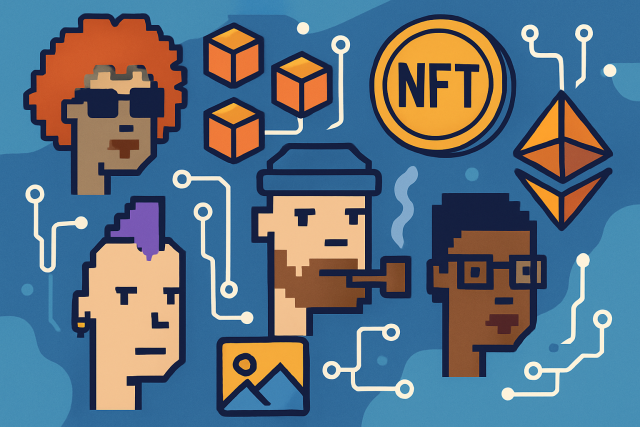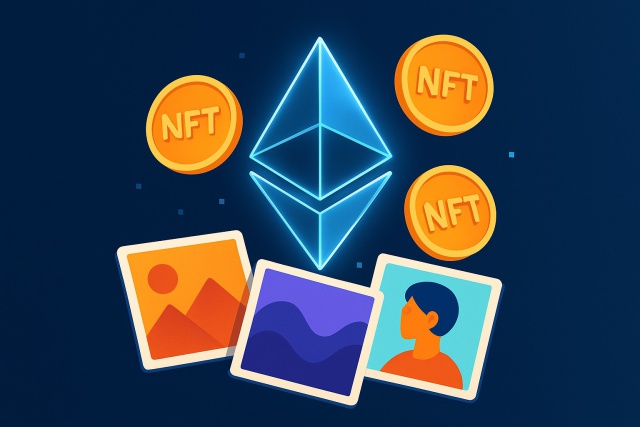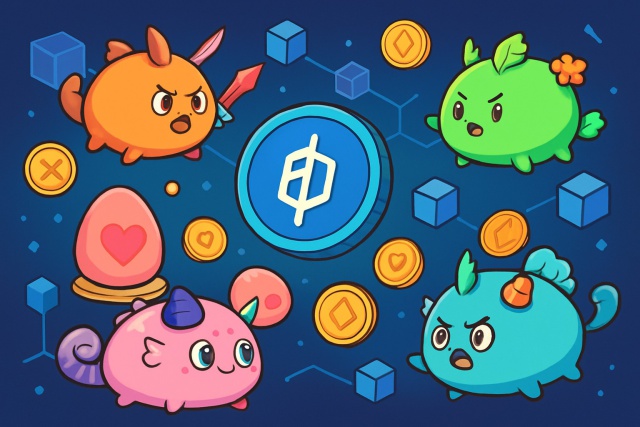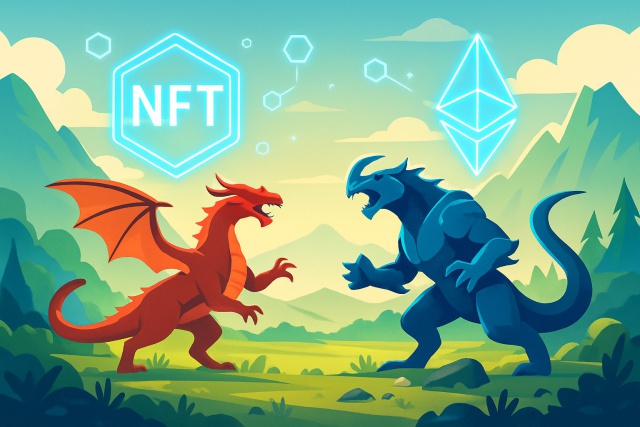What Is An NFT And How It Works On Blockchains


NFTs have quickly grabbed the spotlight in the realm of digital assets, though plenty of people still find themselves asking: what is an NFT exactly?
What Is An NFT? A Clear Explanation That Does not Make Your Head Spin
An NFT stands for Non-Fungible Token and is a unique digital asset that acts as a stamp of ownership or a certificate proving the authenticity of a specific item or piece of content. Unlike cryptocurrencies like Bitcoin where each coin is virtually identical and can be swapped back and forth without a second thought, NFTs are truly one-of-a-kind tokens.
- NFTs are truly one of a kind and cannot be swapped for another token on a one-to-one basis.
- Unlike cryptocurrencies, you cannot break NFTs down into smaller pieces no matter what.
- They serve as digital proof of ownership and confirm authenticity, giving you a reassuring nod in the digital world.
- NFTs come with metadata that clearly shows the asset they represent.
- The ownership history or provenance is securely stored on a blockchain making tampering as unlikely as winning the lottery twice.
An NFT is like holding a rare baseball card or a limited edition collectible everyone wishes they had. Owning that original card means you have the real deal. NFTs act as digital certificates that confirm you are the proud owner of the original digital asset—be it art, music or a video clip.
Understanding How NFTs Really Work on Blockchains
NFTs lean heavily on blockchain technology, which you can think of as a cleverly decentralized network that records transactions securely across many computers. This setup does the heavy lifting to keep NFTs trustworthy by making sure no funny business slips through. It clearly tracks who owns each token, making them not just verifiable but transparently so.
- A decentralized ledger spreads NFT data across many computers so there’s no need to rely on a single authority to keep things honest.
- Immutability is like the digital equivalent of writing in stone. Once ownership or data is recorded, it’s locked in tight and can’t be altered or wiped away.
- Consensus mechanisms ensure everyone is on the same page about the blockchain’s current state. This is a clever way to keep fraud at bay.
- Smart contracts are the real MVPs here. They automatically handle all the rules for creating NFTs, transferring them and managing royalties without needing a middleman to babysit the process.
Smart contracts are agreements that run themselves through code on the blockchain and do all the heavy lifting behind the scenes. When it comes to NFTs they automatically confirm ownership, ensure each piece is unique and handle transfers or royalty payments without breaking a sweat.
The creator kicks things off by turning a digital asset into an NFT and uploading all its data to a smart contract—kind of like handing over the keys to a super secure digital vault.
Important tidbits such as the creation date and who made it get wrapped up neatly as metadata and provenance inside the token.
The NFT gets stamped into the blockchain ledger, officially marking its existence and who holds the bragging rights.
Ownership can switch hands through blockchain transactions. The ledger updates to reflect the fresh new owner—no funny business here.
Anyone can publicly verify the NFT’s authenticity and transaction trail, keeping trust alive through full transparency.
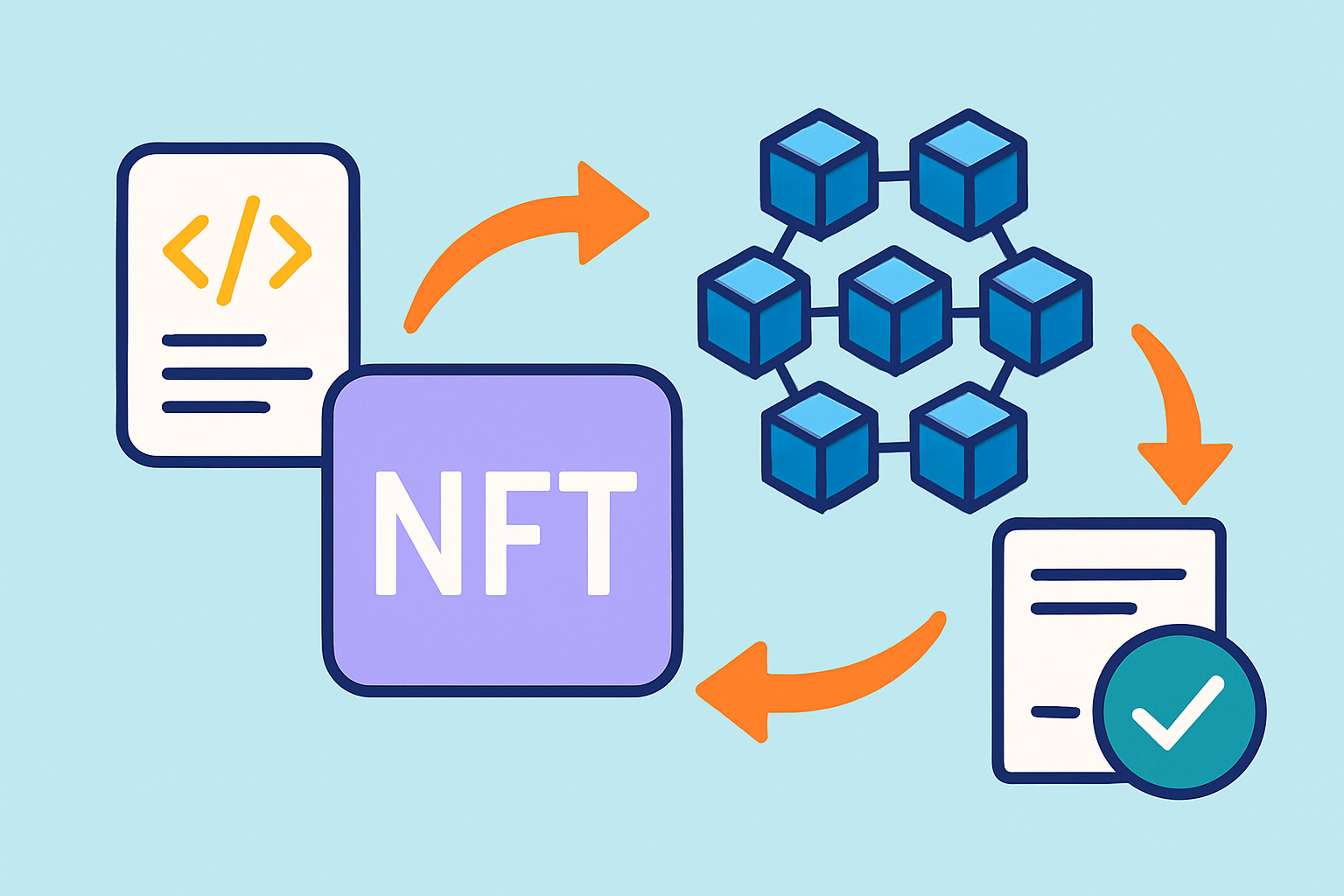
Popular Blockchain Platforms for NFTs That Everyone’s Talking About
Several blockchains support NFTs and each brings something different that can influence transaction speed, cost and the overall vibe of the ecosystem. Ethereum remains the reigning champ in popularity but alternatives like Binance Smart Chain, Solana and Flow often offer faster or wallet-friendlier options.
| Blockchain | Consensus Type | Transaction Speed | Popular NFT Standards | Notable Marketplaces |
|---|---|---|---|---|
| Ethereum | Proof of Stake | Roughly 15 transactions per second, give or take | ERC-721, ERC-1155 | OpenSea, Rarible, Foundation |
| Binance Smart Chain | Proof of Staked Authority | Sitting at about 100 transactions per second, which is pretty neat | BEP-721 | BakerySwap, Treasureland |
| Solana | Proof of History | Zooming past 5000 transactions per second—yes, seriously fast! | Metaplex NFTs | Magic Eden, Solanart |
| Flow | Proof of Stake | More than 1000 transactions per second, so it’s no slouch | Cadence NFTs | NBA Top Shot, VIV3 |
Ethereum still holds the crown for the largest NFT ecosystem but its transactions can drag their feet and the fees sometimes feel like a toll booth on a busy highway. Binance Smart Chain steps in as the speedier wallet-friendly alternative that often fits newcomers like a glove. Then there’s Solana which really shines with its blazing throughput and wallet-pleasing low costs. It’s the new kid on the block and doesn’t have quite the decentralization cred yet.
The Importance of NFTs and How They are Making Their Mark in the Real World
NFTs are about more than just the latest buzz. They represent a genuine shift in the way we own and create in the digital realm. Often tied to digital art and collectibles, gaming items, virtual real estate or intellectual property, NFTs offer creators and users new and more transparent ways to earn money and build connections.
- Digital art gives artists the chance to sell their creations, prove ownership and earn royalties automatically—no middleman fuss.
- Music rights and royalties can be wrapped into tokens that deliver transparent payouts straight to creators and ensure everyone gets their fair share.
- In-game assets like skins or weapons transform into tradable tokens with clear verifiable ownership. Trading feels less like a guessing game.
- Blockchain domain names offer censorship-resistant and easy-to-manage digital identities, giving users peace of mind in the wild web landscape.
- Event tickets issued as NFTs help keep fraud at bay and make transfers or resales a breeze.
- Virtual avatars and collectibles let people craft unique identities within metaverse platforms and add a fun personal touch to digital life.
When creators own NFTs they can include royalty features that funnel a slice of the pie back to them every time their work gets resold. Meanwhile buyers get something equally valuable: verified proof that their shiny new digital asset is the real deal and crystal-clear transaction records.
Owning an NFT feels a bit like clutching a one-of-a-kind, tamper-proof digital certificate that anyone can instantly check out, making sure authenticity and ownership are rock solid — no copy or screenshot could ever pull that off quite the same way.
Common Misunderstandings and Hiccups Around NFTs
People often misunderstand NFTs as worthless mere duplicates or just a flashy way to buy overpriced digital art. These misconceptions overlook the clever technology powering NFTs and the many ways they can be put to good use.
- NFTs don’t just represent a digital asset but, more importantly, who owns it. Even though images can be copied many times that proof of ownership is unique.
- NFTs aren’t a guaranteed jackpot because they come with ups and downs. The market is quite volatile and often influenced by speculation.
- The environmental footprint of some blockchains is worth watching. Thankfully it’s improving as newer energy-friendly methods emerge.
- NFTs have real-world value connected to intellectual property, digital identities and new business models that are still developing.
- Artists aren’t the only ones who benefit. Gamers, collectors, developers and brands all play a role in shaping these new digital experiences.
Early blockchains like Ethereum often leaned on energy-hungry Proof of Work methods. Plenty of NFT platforms have shifted gears to more energy-efficient Proof of Stake or other consensus mechanisms, which really helps trim down their environmental footprint.
Getting Started with NFTs A Friendly Introduction
Getting started with NFTs means covering a few key bases: setting up a digital wallet that works with them, buying some cryptocurrency to fuel your transactions, choosing a reliable marketplace you can trust, and learning how to browse or create your own NFTs.
Choose a digital wallet that works well with your favorite blockchain. Think MetaMask if you’re all about Ethereum or Phantom for Solana fans.
Get some cryptocurrency like ETH, SOL or BNB through an exchange or wallet service. It is easier than you might think once you get the hang of it.
Explore a trustworthy NFT marketplace such as OpenSea, Magic Eden or Binance NFT where you can look for treasures and put your own creations up for sale.
Take your time browsing existing NFTs to buy or enjoy creating your own digital masterpiece using the platform’s handy tools.
Learn about transaction fees often called gas fees and watch out for scams. A little caution goes a long way before you dive in.
When exploring what is an NFT, making sure the creators and platforms are genuine is absolutely key. I always recommend using strong, unique passwords along with two-factor authentication for your wallets—think of it as locking the door twice. Watch out for projects that promise the moon because if it sounds too good to be true, it probably is. Never share your private keys under any circumstances.


